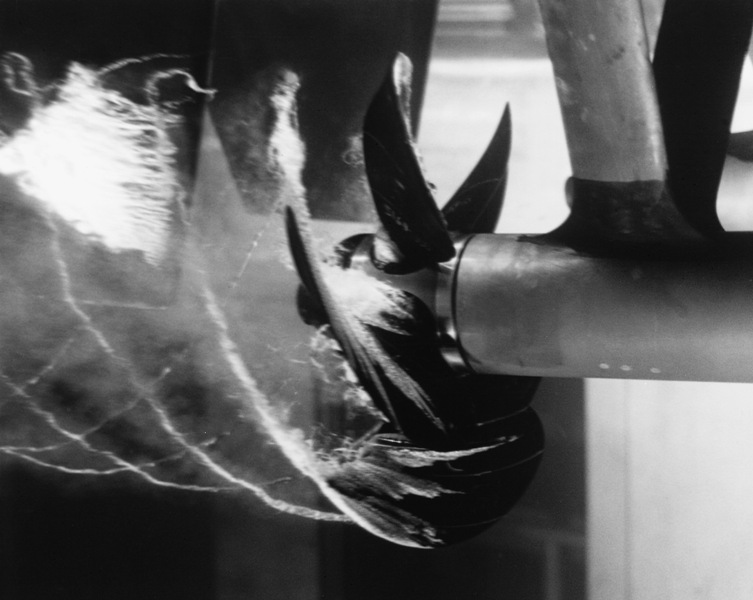|
Sonochemical Synthesis
Sonochemical synthesis is the process which utilizes the principles of sonochemistry to make molecules undergo a chemical reaction with the application of powerful ultrasound radiation (20 kHz–10 MHz). Sonochemistry generates hot spots that can achieve very high temperatures (5000–25.000 K), pressures of more than 1000 atmospheres, and rates of heating and cooling that can exceed 10^11 K/s. High intensity ultrasound produces chemical and physical effects that can be used for the production or modification of a wide range of nanostructured materials. The principle that causes the modification of nanostructures in the sonochemical process is acoustic cavitation Cavitation is a phenomenon in which the static pressure of a liquid reduces to below the liquid's vapour pressure, leading to the formation of small vapor-filled cavities in the liquid. When subjected to higher pressure, these cavities, cal ....A. Gedanken, "Using sonochemistry for the fabrication of nano ... [...More Info...] [...Related Items...] OR: [Wikipedia] [Google] [Baidu] |
Sonochemistry
In chemistry, the study of sonochemistry is concerned with understanding the effect of ultrasound in forming acoustic cavitation in liquids, resulting in the initiation or enhancement of the chemical activity in the solution. Therefore, the chemical effects of ultrasound do not come from a direct interaction of the ultrasonic sound wave with the molecules in the solution. History The influence of sonic waves travelling through liquids was first reported by Robert Williams Wood (1868–1955) and Alfred Lee Loomis (1887–1975) in 1927. The experiment was about the frequency of the energy that it took for sonic waves to "penetrate" the barrier of water. He came to the conclusion that sound does travel faster in water, but because of the water's density compared to earth's atmosphere it was incredibly hard to get the sonic waves to couple their energy into the water. Due to the sudden density change, much of the energy is lost, similar to shining a flashlight towards a piece of glass ... [...More Info...] [...Related Items...] OR: [Wikipedia] [Google] [Baidu] |
American Chemical Society
The American Chemical Society (ACS) is a scientific society based in the United States that supports scientific inquiry in the field of chemistry. Founded in 1876 at New York University, the ACS currently has more than 155,000 members at all degree levels and in all fields of chemistry, chemical engineering, and related fields. It is one of the world's largest scientific societies by membership. The ACS is a 501(c)(3) non-profit organization and holds a congressional charter under Title 36 of the United States Code. Its headquarters are located in Washington, D.C., and it has a large concentration of staff in Columbus, Ohio. The ACS is a leading source of scientific information through its peer-reviewed scientific journals, national conferences, and the Chemical Abstracts Service. Its publications division produces over 60 scholarly journals including the prestigious ''Journal of the American Chemical Society'', as well as the weekly trade magazine '' Chemical & Engineeri ... [...More Info...] [...Related Items...] OR: [Wikipedia] [Google] [Baidu] |
ScienceDirect
ScienceDirect is a website which provides access to a large bibliographic database of scientific and medical publications of the Dutch publisher Elsevier. It hosts over 18 million pieces of content from more than 4,000 academic journals and 30,000 e-books of this publisher. The access to the full-text requires subscription, while the bibliographic metadata is free to read. ScienceDirect is operated by Elsevier. It was launched in March 1997. Usage The journals are grouped into four main sections: '' Physical Sciences and Engineering'', '' Life Sciences'', ''Health Sciences'', and ''Social Sciences and Humanities''. Article abstracts are freely available, and access to their full texts (in PDF and, for newer publications, also HTML) generally requires a subscription or pay-per-view purchase unless the content is freely available in open access. Subscriptions to the overall offering hosted on ScienceDirect, rather than to specific titles it carries, are usually acquired thr ... [...More Info...] [...Related Items...] OR: [Wikipedia] [Google] [Baidu] |
Cavitation
Cavitation is a phenomenon in which the static pressure of a liquid reduces to below the liquid's vapour pressure, leading to the formation of small vapor-filled cavities in the liquid. When subjected to higher pressure, these cavities, called "bubbles" or "voids", collapse and can generate shock waves that may damage machinery. These shock waves are strong when they are very close to the imploded bubble, but rapidly weaken as they propagate away from the implosion. Cavitation is a significant cause of wear in some engineering contexts. Collapsing voids that implode near to a metal surface cause cyclic stress through repeated implosion. This results in surface fatigue of the metal causing a type of wear also called "cavitation". The most common examples of this kind of wear are to pump impellers, and bends where a sudden change in the direction of liquid occurs. Cavitation is usually divided into two classes of behavior: inertial (or transient) cavitation and non-inertial c ... [...More Info...] [...Related Items...] OR: [Wikipedia] [Google] [Baidu] |
